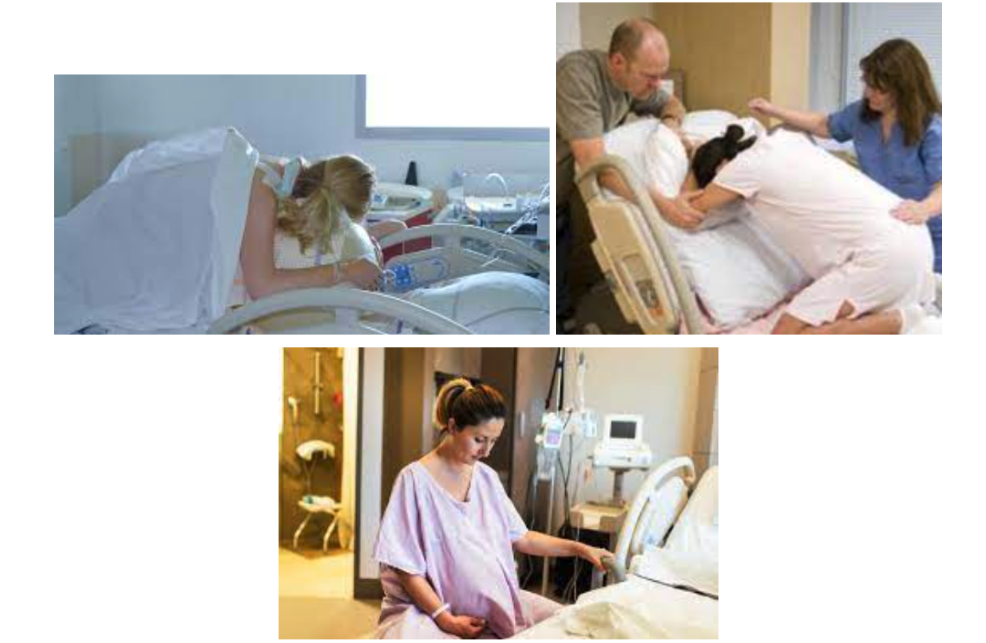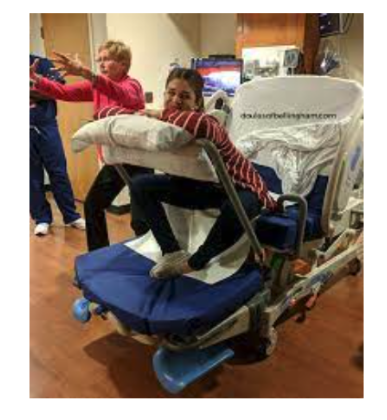We know, hospital labor and delivery beds are not known for their comfort. In fact, they have a huge break in the mattress where the lower half of the bed can be removed. This definitely contributes to the discomfort. However, the functions of the bed, often hidden to the layperson can actually work to your advantage. Read on for our crash course on the typical L&D bed and how to use it to support your labor experience.

Hospital Bed Basics:
- The height of the entire bed can be adjusted from about 2 feet off the ground to about 3.5 feet off the ground.
- The bottom part of the bed can be lowered and raised independent of the rest of the bed.
- The back of the bed can be lowered to create a completely flat surface, or raised to create an incline up to 90 degrees.
- There are side rails on either side of the head of the bed that can be raised or lowered.
- Handles are located on either side of the bed that can be raised or lowered for use during pushing.
- The lower part of the bed has inserts for use with a squat bar.
- The beds are equipped with “stirrups,” or supports for the feet and legs, for use when the bottom part of the bed is removed to assume the classic lithotomy birthing position. The stirrups can be raised, lowered, and moved side to side. If you don’t want to use them the intended way, use them to hold a peanut ball in place or to give your legs something to rest on while doing wide need positions. You can also use them for something to press against to give yourself more leverage when pushing.
Standing Positions:
How you use the bed depends on how you are laboring. If you are standing, raise the bed to a height that is comfortable to lean on and sway. Add an exercise ball on top to elevate you even further and to give you something to rest your head on in between contractions. Lower it down a bit to place one foot on the bed if you’d like to lunge. If seated next to the bed on a birthing ball, lower it down and place some pillows to be able to support yourself and relax forward.
All Fours and Seated Positions:
If opting for an all-fours position, try kneeling on the bed, raising the backrest, and draping your upper body over the back of the bed. Play with the angle for what feels best in the moment. Alternatively, flatten the bed out and bring the birth ball onto the bed to lean on. Add a peanut ball between your legs for added support while in sidelying position.

If you’d like to sit up in the bed, raise the backrest as high as it will go and add some pillows to your lower back. This will make it so that you’re sitting with your shoulders over your hips and your belly forward. You can lower the foot of the bed so the bed feels like a chair. Alternatively, plant your feet and raise the foot of the bed slightly to simulate a squatting position. Don’t be afraid to use the stirrups in this position: They can be used to help create a knees-together position if appropriate, or elevate one leg in an asymmetrical position (peanut balls are useful here too!)

Don’t forget about the squat bar! It can allow you to lean forward in a sitting position, or support yourself in a squat while on the bed.

Be sure to ask your nurse for a tutorial on how to use the different buttons, and for assistance changing positions. If you hire a doula, they will help ensure you are using this monstrosity of a bed to your full advantage!
Written by Danielle McFadden, L&D RN, CLD, EBB instructor



